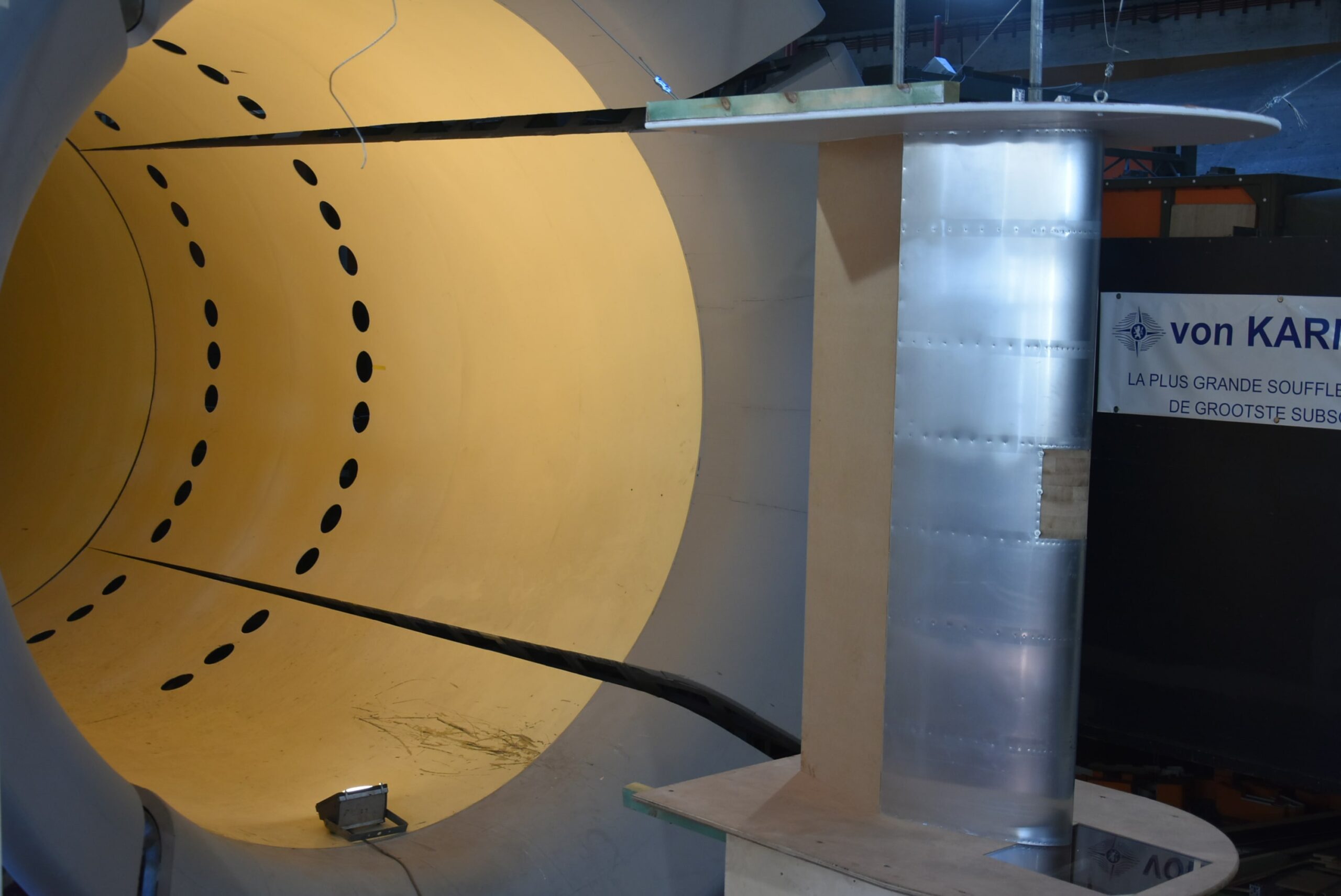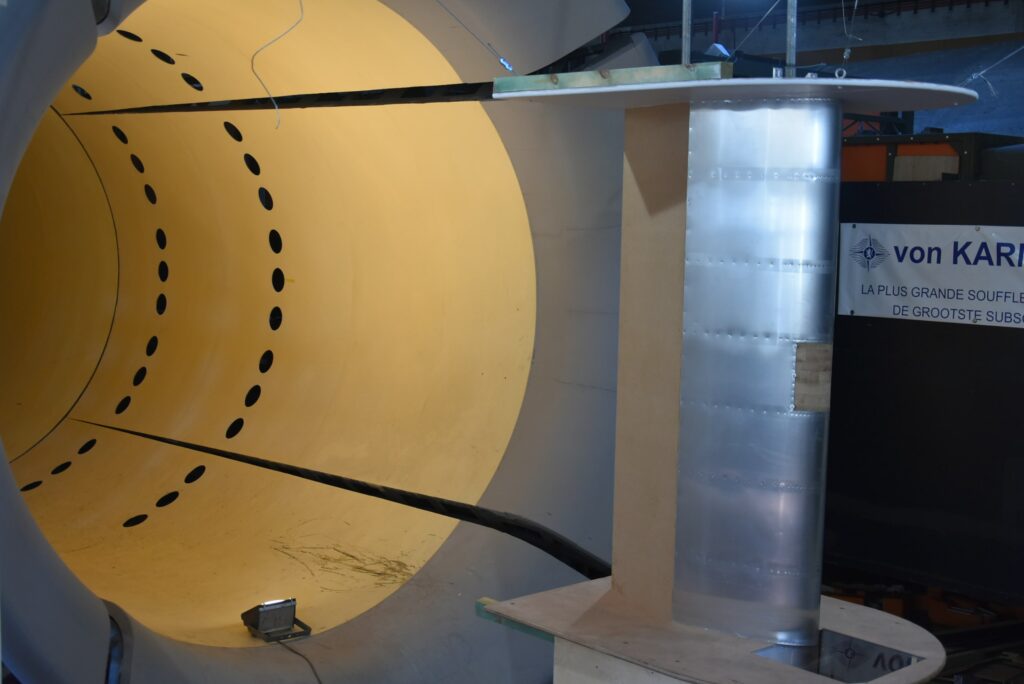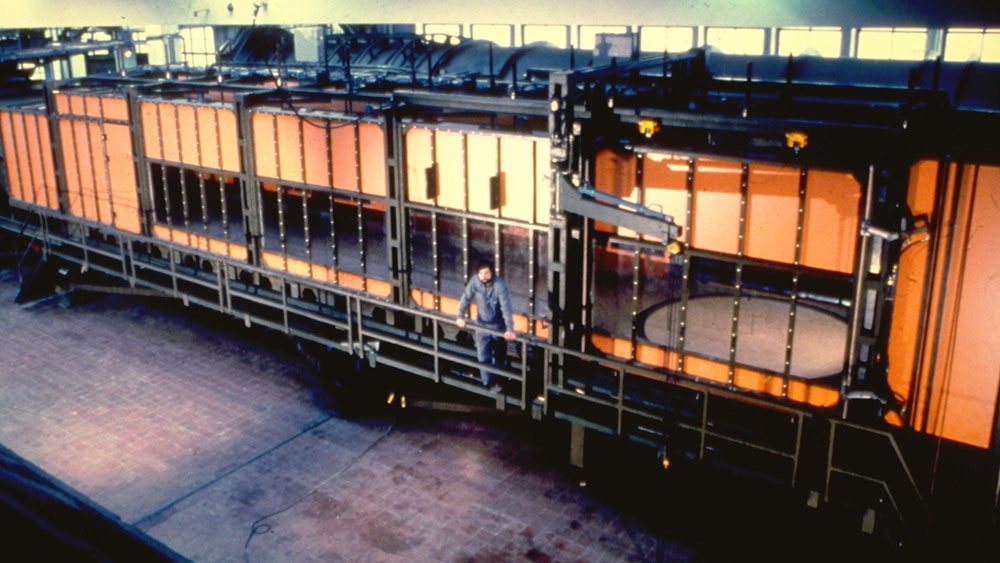
The is a continuous operating facility with two counter-rotating fans, driven by a 580 kW variable speed DC motor, which allows a velocity variation from 2 to 60 m/s and this with a typical turbulence level of 0.3%. Different instrumentation is available to measure forces, pressure distributions, wake measurements with different types of probes, optical flow visualizations and characterizations, dynamic behavior, etc. The wind tunnel consists of 2 interchangeable test sections: a closed circuit and an open-jet test section. Both sections are not temperature and pressure controlled, allowing testing only at ambient pressure and temperature.
The open-jet test section measures 3m in diameter and 4.5m in length and is typically used to measure the aerodynamic coefficients and dynamic behavior of 2D wings, 3D models (scale models of aircraft, car parts, etc.), drones and other equipment exposed to wind. In addition, calibration and characterization of (directional) probes can also be performed in this test section. Moreover, water can be injected into the flow to investigate e.g. the influence of rain on pitot probes.
The closed test section is 2m high, 3m wide and 20m long with a rough floor to allow the growth of a turbulent boundary layer similar in nature to the lower part of the atmospheric neutral boundary layer. The beginning of the section, with uniform inflow profile, is equipped with a platform balance with six components for the aerodynamic examination of scale models of aircraft, vehicles, boats, etc. At the end of the closed test section, a turntable with a diameter of 2.6 m is provided for wind engineering applications.


• 2 Test sections: ⌀3m x 4.5m and 2m x 3m x 20m
• Maximum pressure: Ambient pressure (not controlled)
• Maximum temperatures: Ambient temperature (not controlled)
• Maximum speed: 60m/s
• Measurement instruments: Force transducers (both internal and external custom made balances), pressure distributions and transient effects (flush mounted fast response probes or static measurements), wake measurements with different types of probes (hot wire, Cobra-probes,…), optical flow visualizations and characterizations (PIV, LDV,…), dynamic behavior (high speed imaging,…), etc.
